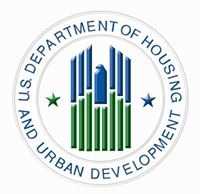Study Shows Massive Shortage of Affordable and Available Housing for Lowest Income Households in America
WASHINGTON, D.C. – (RealEstateRama) — The GAP: A Shortage of Affordable Homes, a new report released today by the National Low Income Housing Coalition (NLIHC), finds a shortage of 7.4 million affordable and available rental homes for extremely low income (ELI) renter households, those with incomes at or below 30% of their area median income or the poverty guideline. The report calls for rebalancing federal housing expenditures to serve households with the greatest needs.

The study finds there are just 35 affordable and available units for every 100 ELI renter households nationwide and that 71% of ELI renter households are severely-cost burdened, spending more than half of their income on housing. After paying their rent, these households have insufficient resources left for other necessities like food, medicine, transportation, or child care. They are often one financial set-back away from eviction and homelessness.
NLIHC conducts this research each year to assess the availability of housing affordable to different income levels throughout the country. “This year’s analysis continues to show that the poorest households in our nation face the largest shortage of affordable and available rental housing and have more severe housing cost burdens than any other group,” said Andrew Aurand, vice president for research at NLIHC and lead author of the report. “The shortage disappears for households higher up the income ladder.”
The GAP, based on 2015 American Community Survey data, presents the availability of affordable homes for renter households in each state, the District of Columbia, and the 50 largest metropolitan areas. ELI renter households face a shortage of affordable and available rental homes in every state. The supply ranges from 15 affordable and available homes for every 100 ELI renter households in Nevada to 61 in Alabama. After Nevada, the states where ELI renters face the greatest challenges finding affordable homes are California (21 affordable and available rental homes for every 100 ELI renter households), Arizona (26 for every 100 ELI renter households), Oregon (26 for every 100 ELI renter households), Colorado (27 for every 100 ELI renter households), and Florida (27 for every 100 ELI renter households). The affordable housing shortage for ELI households ranges from 8,700 rental homes in Wyoming to 1.1 million in California.
Diane Yentel, president and CEO of NLIHC, urges Congress to address the grave shortage of affordable and available rental housing for the poorest households in America. “Tax reform provides Congress the perfect opportunity to enact modest changes to housing tax expenditures, particularly to the highly regressive mortgage interest deduction, to generate billions in savings that could support housing affordability for our nation’s lowest income households.” Ms. Yentel said.
The NLIHC-led United for Homes (UFH) campaign calls for rebalancing federal housing expenditures, 75% of which currently benefit higher income homeowners, to invest in affordable housing for the poorest households. The campaign calls for changes to the mortgage interest deduction that would benefit millions of additional lower income homeowners and generate billions of dollars in savings for investments in affordable rental housing.
The GAP: A Shortage of Affordable Homes is at: http://nlihc.org/research/gap-report
For more information on the United for Homes campaign, visit: www.unitedforhomes.org
###
Established in 1974 by Cushing N. Dolbeare, the National Low income Housing Coalition is dedicated solely to achieving socially just public policy that assures people with the lowest income in the United States have affordable and decent homes.
RESS CONTACT
Renee Willis
Vice President for Field & Communications
(202) 662-1530 x247













